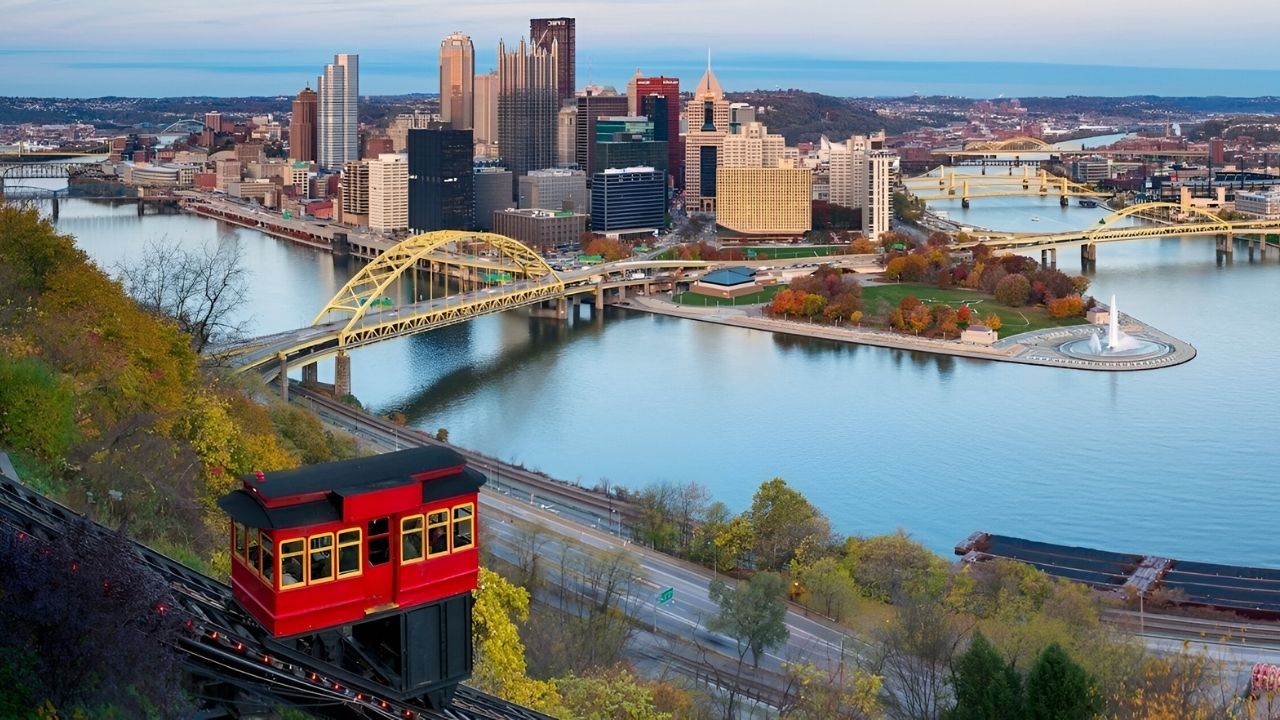Shadows Of The Streetcars: Secret Funicular Railways Of Pittsburgh

Have you ever wondered about the hidden gems of Pittsburgh? While the city is famous for its bridges and sports teams, it also hides a fascinating secret: funicular railways. These unique railways, also known as inclines, have been part of Pittsburgh's landscape since the 19th century. They were originally built to help residents navigate the city's steep hills. Today, they offer a charming way to see the city from a different angle. Whether you're a history buff or just looking for a unique experience, Pittsburgh's funicular railways provide a glimpse into the past while offering stunning views of the present. Ready to ride? Let's dive into the world of Pittsburgh's hidden funicular railways.
Shadows of the Streetcars: Secret Funicular Railways of Pittsburgh
Pittsburgh, known for its steel industry, bridges, and rivers, also hides a fascinating secret: funicular railways. These inclined planes once played a crucial role in the city's transportation. Today, they offer a unique glimpse into Pittsburgh's past while providing stunning views of the cityscape.
The Duquesne Incline
The Duquesne Incline is one of Pittsburgh's most iconic funiculars. Operating since 1877, it offers a nostalgic ride with breathtaking views of the city and its rivers.
- Historical Significance: Originally used to transport workers up and down Mount Washington, it now serves as a tourist attraction.
- Scenic Views: The observation deck at the top provides panoramic views of downtown Pittsburgh.
- Museum: The upper station houses a small museum showcasing the history of the incline and Pittsburgh.
The Monongahela Incline
Another gem in Pittsburgh's collection of funiculars is the Monongahela Incline. This incline has been in operation since 1870 and is the oldest continuously operating funicular in the United States.
- Engineering Marvel: It was initially powered by steam and later converted to electricity.
- Accessibility: Conveniently located near Station Square, it provides easy access to Mount Washington.
- Local Commute: Still used by locals for daily commutes, it offers a practical and scenic route.
The Castle Shannon Incline
Though no longer in operation, the Castle Shannon Incline played a significant role in Pittsburgh's transportation history. It connected the South Hills to downtown Pittsburgh.
- Historical Route: It was one of the longest inclines in the city, stretching over 1,500 feet.
- Legacy: While the incline itself is gone, its path is still visible and serves as a reminder of Pittsburgh's innovative transit solutions.
- Community Impact: It helped shape the development of the South Hills neighborhood.
The Knoxville Incline
The Knoxville Incline was another important funicular that served Pittsburgh residents. Operating from 1890 to 1960, it connected the Knoxville neighborhood to the South Side.
- Steep Ascent: Known for its steep grade, it provided a quick route up the hill.
- Economic Boost: It facilitated the growth of the Knoxville area by making it more accessible.
- Historical Remnants: Some remnants of the incline's infrastructure can still be found in the area.
The Penn Incline
The Penn Incline was unique as it connected the Strip District to the Hill District. Though it ceased operation in 1953, its impact on the city's development remains significant.
- Industrial Use: Primarily used to transport goods, it played a vital role in Pittsburgh's industrial era.
- Urban Development: It contributed to the growth of the Hill District by providing easy access to the Strip District.
- Cultural Influence: The incline's history is intertwined with the cultural evolution of the neighborhoods it connected.
The St. Clair Incline
The St. Clair Incline was another notable funicular that operated in Pittsburgh. Running from 1888 to 1935, it connected the St. Clair neighborhood to the South Side.
- Residential Access: It provided residents with a convenient route to the bustling South Side.
- Economic Development: It spurred growth in the St. Clair area by improving accessibility.
- Historical Significance: Though no longer in operation, its legacy lives on in the community's history.
The Troy Hill Incline
The Troy Hill Incline was a lesser-known but equally important funicular in Pittsburgh. Operating from 1887 to 1898, it connected the Troy Hill neighborhood to the North Side.
- Short-Lived Operation: Despite its brief operation, it played a crucial role in the development of Troy Hill.
- Community Impact: It provided residents with a direct route to the North Side, fostering economic growth.
- Historical Footprint: While the incline is long gone, its impact on the neighborhood's development is still evident.
Hidden Gems of Pittsburgh
Pittsburgh's funicular railways offer a unique glimpse into the city's rich history. These hidden gems, like the Duquesne Incline and the Monongahela Incline, provide more than just transportation. They offer stunning views of the cityscape and a nostalgic ride through time. Exploring these railways can be a fun adventure for both locals and visitors. They highlight Pittsburgh's industrial past and its transformation into a modern city. Next time you're in Pittsburgh, take a ride on one of these historic inclines. You'll get a new perspective on the city and a memorable experience. Whether you're a history buff or just looking for something different to do, these funiculars are worth the trip. Don't miss out on this unique part of Pittsburgh's charm.

